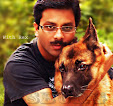Precision in Proportion: The Foreleg–Withers Ratio and Its Pivotal Role in German Shepherd Functionality
According to the SV (Verein für Deutsche Schäferhunde) standard, the fore arm must account for 52% to 55% of the total height measured at the withers. While on paper this may appear as a simple ratio, in practice, it defines the very mechanics of motion, endurance, and utility, especially in a breed developed for day-long trotting, herding, and working in varied terrains.
The Importance of Proportional Architecture
To understand the depth of this standard, consider a dog with 60 cm height at withers. The correct foreleg length should range from 31.2 cm to 33 cm. This dictates a chest depth that is clearly subordinate to the foreleg length—a structural hallmark of correct breed type. The overall visual result is a dog that stands slightly taller on leg, leaner underneath, and more agile in silhouette.
However, this proportion is not merely a breed trait—it is a reflection of biomechanical engineering refined by both natural selection and human guidance for functional excellence.
Biomechanics: The Engine Behind Efficient Movement
The German Shepherd is renowned for its ground-covering, energy-efficient gait, particularly the extended trot. For this to occur without physical strain or breakdown, there must be a coordinated balance between anatomical structure and motion mechanics—and this begins with the length of the foreleg.
1. Foreleg as a Lever Arm
From a mechanical standpoint, the foreleg functions as a primary lever during locomotion. A foreleg of correct length and angulation allows:
-
Increased stride arc: A longer forearm increases the angular sweep of the leg during the protraction phase of the stride.
-
Enhanced reach: Forward extension from the shoulder becomes more effortless and natural, contributing to a longer, more elastic gait.
2. Elevated Center of Kinetic Momentum
The correct ratio also raises the functional center of gravity, allowing the dog to shift weight effectively during motion without sinking at the shoulders. When the chest is too deep (i.e., foreleg proportion too short), the dog becomes “front-heavy,” leading to:
-
A shortened stride
-
Premature fatigue
-
Greater energy loss per cycle of motion
3. Synchronized Drive and Lift
The hindquarters generate propulsion, but unless that drive is harmonized by correct lift and reach in the front, the movement becomes restricted and jarring. The foreleg acts as a counterbalance to rear drive, helping maintain rhythm, symmetry, and fluidity across all gaits.
What Happens When the Proportion Fails?
Dogs bred or selected with forelegs under 52% of withers height often exhibit exaggerated depth of chest, appearing deeper-bodied but structurally inefficient. This anatomical imbalance leads to:
-
Reduced agility: The lowered balance point hampers swift directional changes.
-
Stilted movement: Especially noticeable in the trot, where forehand reach is visibly shortened.
-
Increased wear and tear: Repetitive stress accumulates on shoulders and elbow joints due to poor shock absorption and front-loading.
What seems like a visually "strong" front can, in practice, be a biomechanical burden that the dog must compensate for over time—often leading to early fatigue or orthopedic stress.
Case Study: Irk von der Wienerau – The Blueprint
The male German Shepherd Irk von der Wienerau, whelped on 19 October 1975, remains an iconic representation of correct foreleg-to-height proportion. Not just visually striking, Irk embodied:
-
Structural firmness
-
Balanced angulations
-
Powerful yet elastic movement
-
Consistent gait fluidity from all angles
His anatomical correctness contributed directly to his working drive, stamina, and ease of motion, all while maintaining breed-typical expression and character.
Irk didn’t just meet the standard, he moved the standard forward, becoming a timeless reference point for breeders and judges striving to prioritize function without sacrificing type.
Case Study: Remo Fichtenschlag – The Another Breed Blueprint
Now a two-time Sieger, Remo vom Fichtenschlag stands as a textbook example of what correct anatomical proportions can achieve in motion, balance, and long-term utility. A large, powerful, and dry male of exceptional type and expression, Remo displays a strong head with firm ears, high withers leading into a straight, firm topline, and a well-laid croup of correct length and angle. His front and rear angulation are exemplary, his joints—elbows and hocks—are tight, and his movement remains parallel and clean from all views.
In Remo’s case also, this proportion is not theoretical; it’s functional reality. His foreleg-to-wither ratio fits around the 1:1.92 range, granting him not just textbook correctness, but the mechanical efficiency required for the breed's defining trait... the extended trot.
This ratio directly influences stride reach, limb leverage, and energy conservation. Remo’s movement, described as far-reaching, dynamic, and balanced in all phases—from the walk to the demanded working trot—is made possible by this precise anatomical harmony. His front extension is free, his rear drive powerful, and his center of gravity remains stable throughout the gait cycle. In the ring, this meant commanding presence; in function, it meant a dog built to work tirelessly over varying terrain with minimal physical stress.
In a breed whose original purpose was herding over long distances, Remo’s structure honors the legacy - not only by adhering to the standard but by performing it.
Form Must Follow Function
The foreleg-to-wither height ratio is not a cosmetic suggestion. It is a critical component of functional anatomy that preserves the GSD’s original utility. For a breed whose reputation rests on performance and endurance, this proportion defines whether a dog can move effortlessly, work tirelessly, and remain structurally sound across a lifetime.
As custodians of this magnificent breed, we must uphold such principles with diligence. Every breeding decision, every show critique, and every structural assessment must ask: Does this dog move with purpose—or merely stand with posture?
Because in the world of the German Shepherd Dog, proportion is power—and that power begins in the foreleg.



























0 comments :
Post a Comment